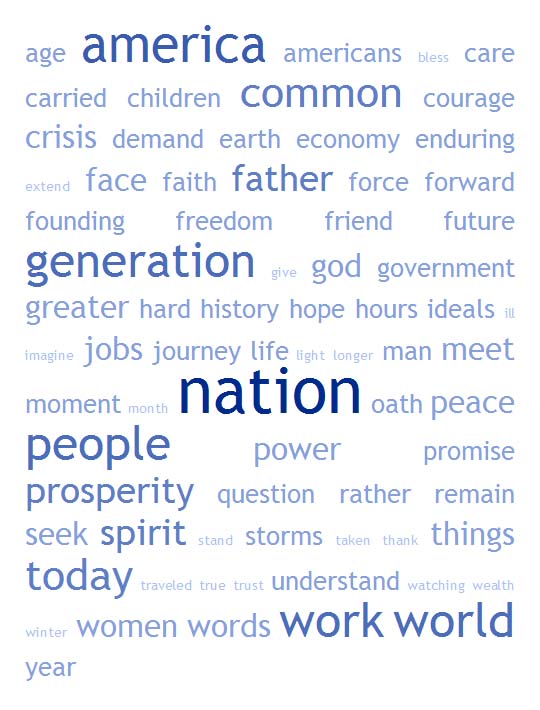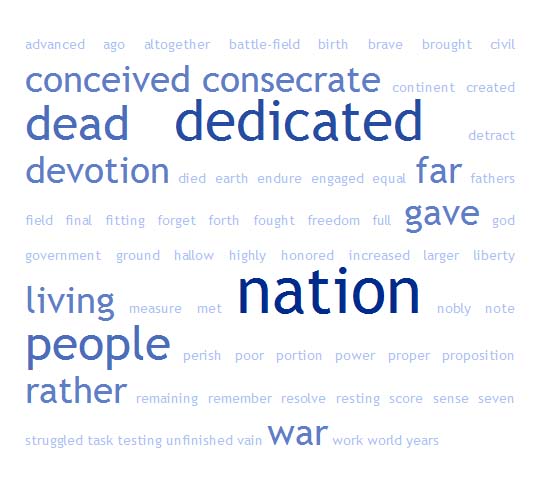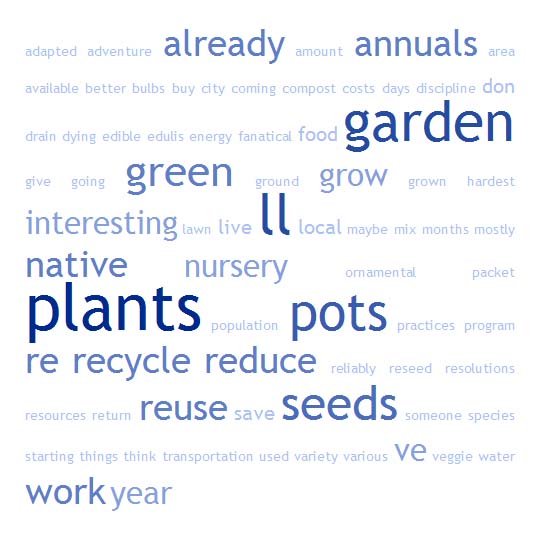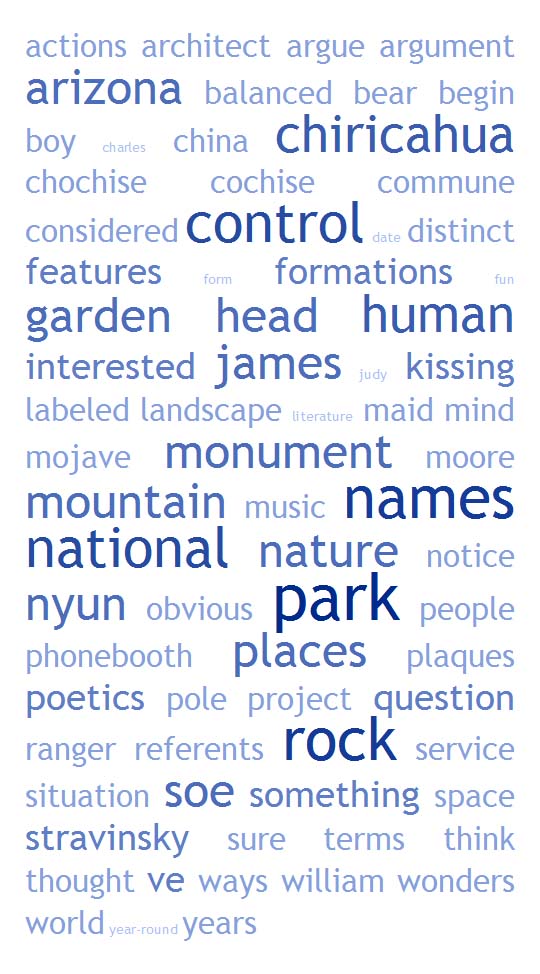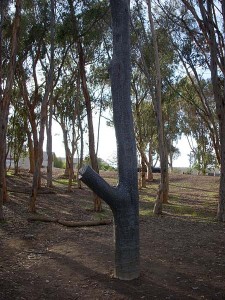A lot of blogs these days–including this one–have tag clouds in their sidebars. These highly visual displays of tags the blogger has supplied give you a good sense of the kinds of topics the blog covers. And they give you a sense of how often the topics get discussed.
These do a nice job of displaying the words the blogger thought would be important, but they sometimes miss the big picture that you could get by turning an entire post into a cloud, something using all the words in the post, not just the ones supplied by the blogger.
One of the interesting things I saw in the coverage of Barack Obama’s inauguration was an Associated Press visualization of his inaugural address using an online tool to analyze the frequency of the words he used. (Perhaps the AP’s analysis was based on one at Free Government Information.) Then the story went on to compare it with a visualized version of George Bush’s 2005 inaugural address.
I used the same tool, TagCrowd, to re-visualize the same Obama speech. TagCrowd picks the most frequently used words and assigns different sizes to them. As in a regular tag cloud, the bigger the visualized word, the more times it was used.
But instead of comparing it to Bush’s address, I visualized Lincoln’s Gettysburg address, since people seem to compare Obama and Lincoln. You can see how language has shifted over one and a half centuries, as well as how differently the men use words.
Interesting, huh?
Then I thought, why not try visualizing some blog posts by turning all the words in blog posts into clouds? Would the results between posts be that different? And would they differ much from the tag cloud in my left sidebar?
The first posting I analyzed is a recent one, “greener gardening practices,” from January 7:
How would that gardening post compare with one of my older hoity-toity art posts? This is the cloud derived from “gardens, phonebooths, poetics and old maids,” a post from January 21, 2008:
Pretty different clouds, I thought. (And sorry for the typos on “Cochise!”) The different subjects resulted in dramatically different vocabularies and different word emphases. Also, over the last year, I’ve been trying to simplify my writing for the web–not at all dumbing it down, but adapting to how people read text on a screen versus text in a book. That probably contributed to a difference between the two posts.
Try TagCrowd. Compare old posts with new posts, or posts about your garden with those about your friends or travels. Or pick just one text you like to see what the repeated words tell you.
I think you’ll discover some interesting things!

